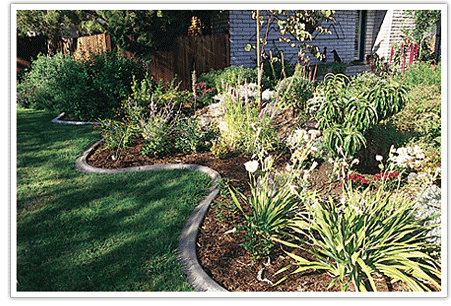Planting: Planting Your Lawn
 When starting a new lawn from seed or sod, work your soil to a depth of six inches and add soil amendments like compost, nitrogen-rich fertilizer and other beneficial chemicals. Once tilled, level the area for a smooth seed bed. Make sure the water drains away from your house, into other plants if possible, but not into your neighbor's yard. After contouring, water thoroughly, then level out high and low spots. Whether you choose seed, sod or hydromulch, follow the recommendations from a landscape expert or lawn supplier for a healthy, well-established lawn.
When starting a new lawn from seed or sod, work your soil to a depth of six inches and add soil amendments like compost, nitrogen-rich fertilizer and other beneficial chemicals. Once tilled, level the area for a smooth seed bed. Make sure the water drains away from your house, into other plants if possible, but not into your neighbor's yard. After contouring, water thoroughly, then level out high and low spots. Whether you choose seed, sod or hydromulch, follow the recommendations from a landscape expert or lawn supplier for a healthy, well-established lawn.
Hint: Consider installing a lawn buffer zone when planting new lawn.
Consider planting alternatives to turf, such as native grasses
There are species of grasses that can be used to create very drought tolerant and low-maintenance lawns in the Truckee Meadows. These species do well on very little water, require no fertilization, and need mowing only once or twice a season to keep them tidy:
• Blue Grama Grass (Bouteloua gracilis), is a high plains native, warm season, very drought tolerant lawn grass. It is fine-textured, forms sod, is easy to establish, cold hardy and disease free. It can be sown anytime up to two months before the first fall frost, and will fill out well in the first season. Left unmowed, Blue Grama will form bunches that will be 1- to 1 1/2-feet high with seed heads. About three to four pounds of seed is sufficient for 1,000 square feet.
• Buffalo grass (Buchloe dactyloides) is a very low growing grass that only reaches four to six inches in height. It's durable sage-green color, drought hardiness, resistance to diseases and pests make it an excellent choice for necessary lawn areas and meadows in full sun. Buffalo grass is available as sod, in flats as plugs and by the pound as seed. A warm- season grass, it colors to beige over the winter but greens up in the late spring.
• Durar Hard Fescue (Festuca brevipila 'Durar') is a cool season bunchgrass with a blue hue to its fine-textured leaves. It is long-lived, has a deep root system and excellent drought resistance. It can tolerate some shade and establishes as a lawn in the second season. Seed at six pounds per 1,000 square feet.
• Sheep Fescue (Festuca ovina) is similar to Durar, but even more drought-tolerant, making it an excellent complement to a seed mix for establishing a low-water lawn.
Watering New Lawns
New lawns require a lot of water to get established. If you're planting a new lawn from seed or by installing sod, it's wise to do it in the spring or wait until fall when temperatures are cooler and there is less stress on the lawn. TMWA requires customers to obtain a 6-week watering variance when establishing new lawns. To obtain a variance, call TMWA's Conservation Hotline at 834-8005 or email conservation@tmwa.net.
